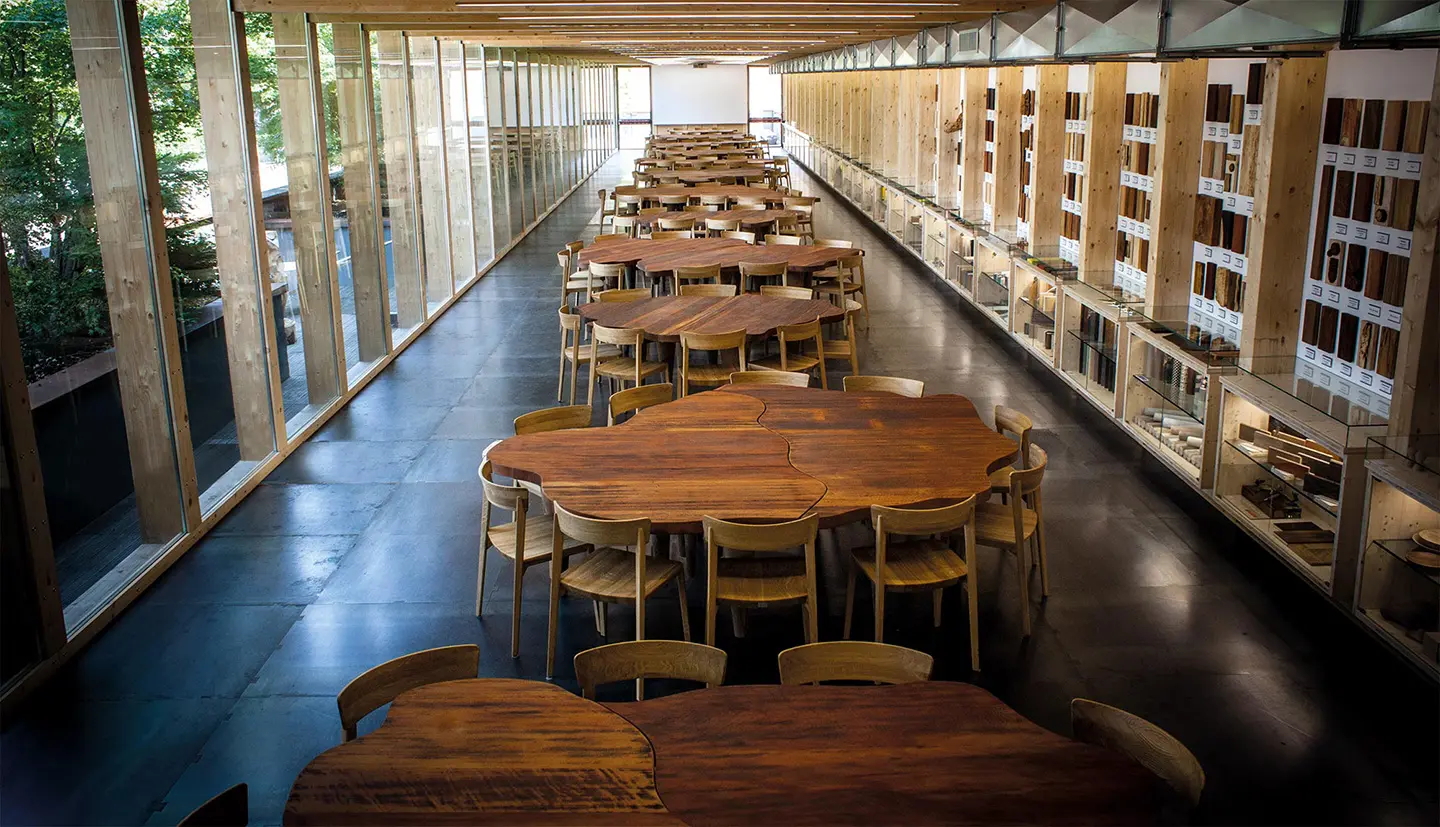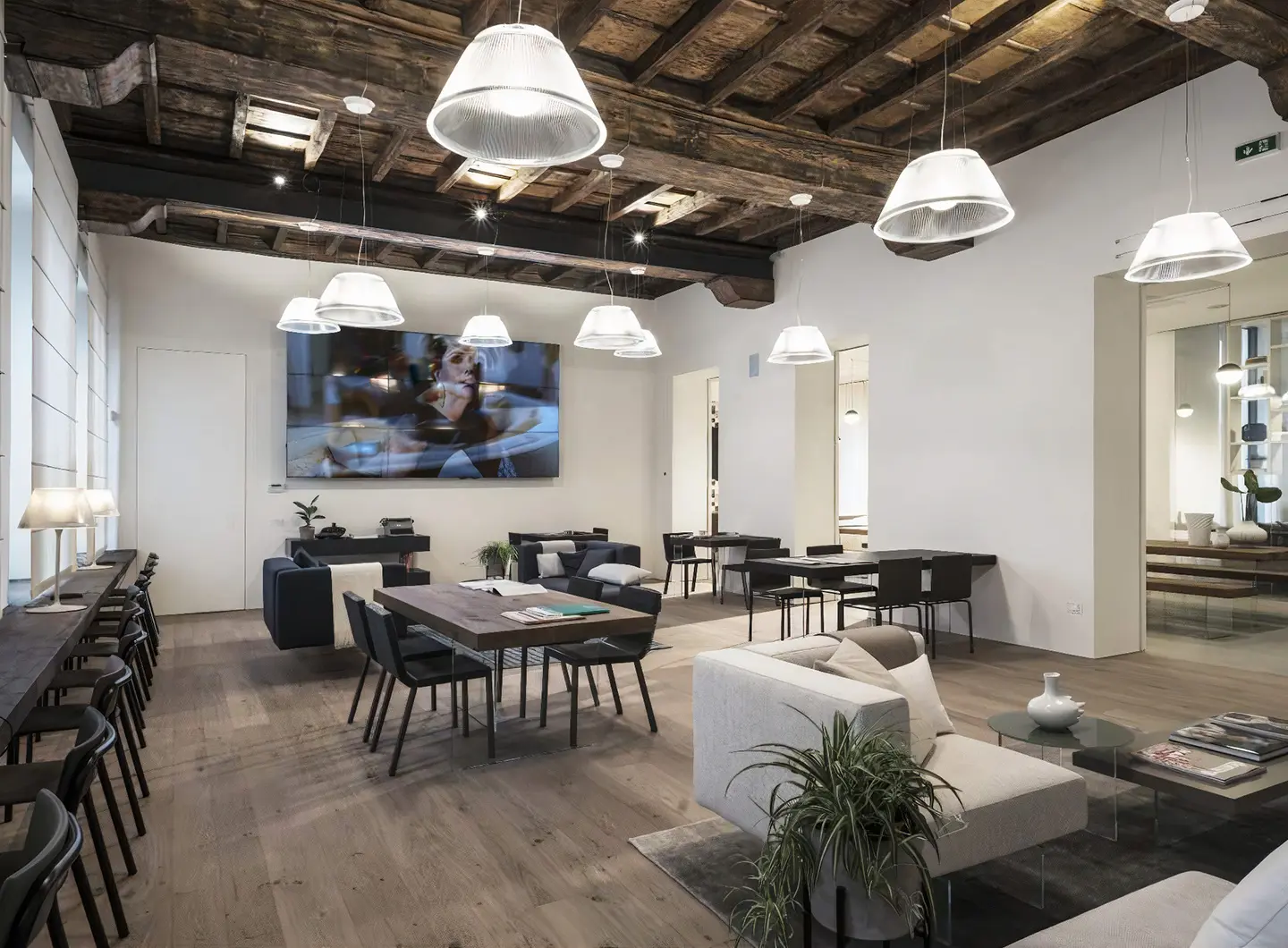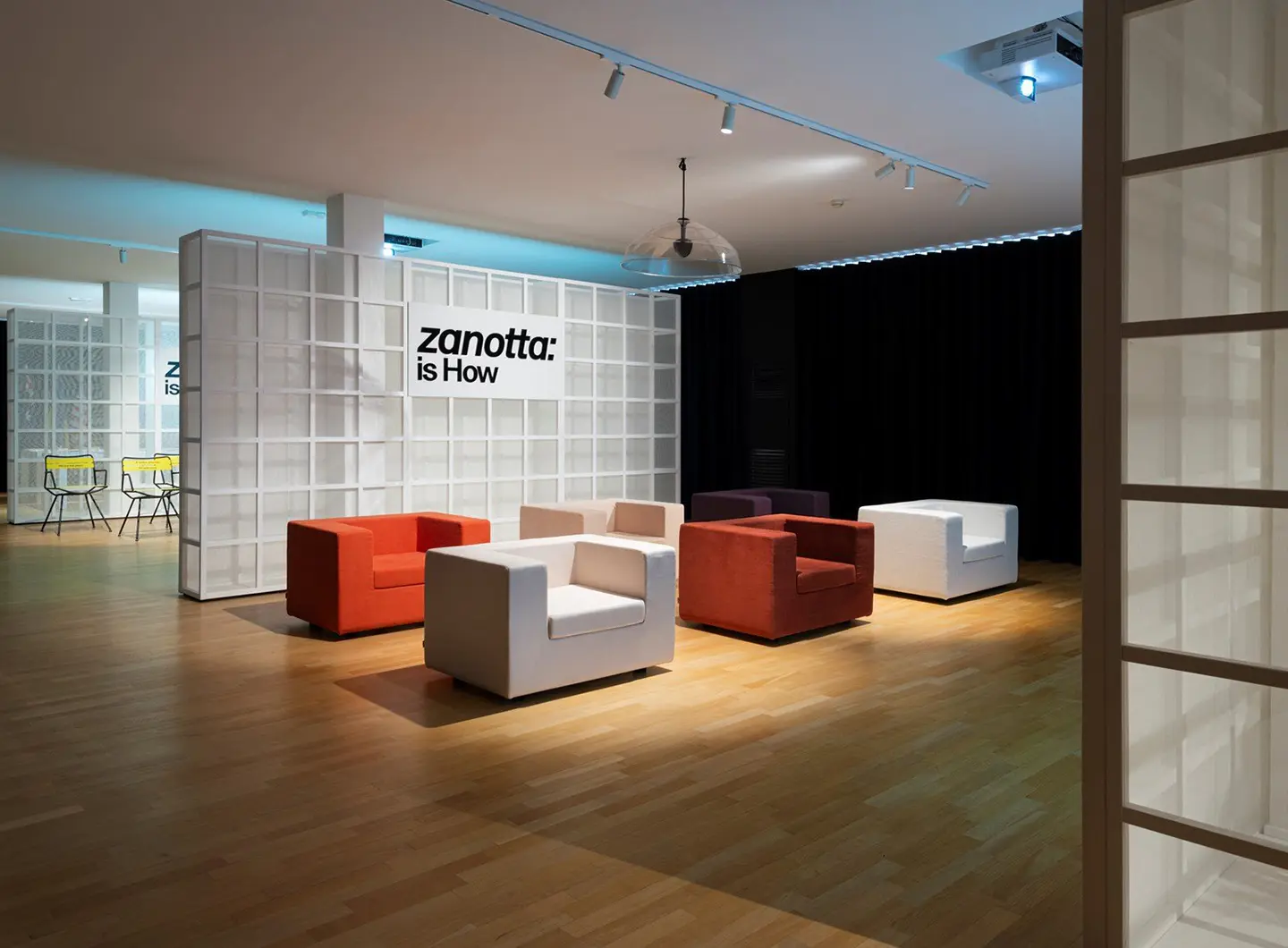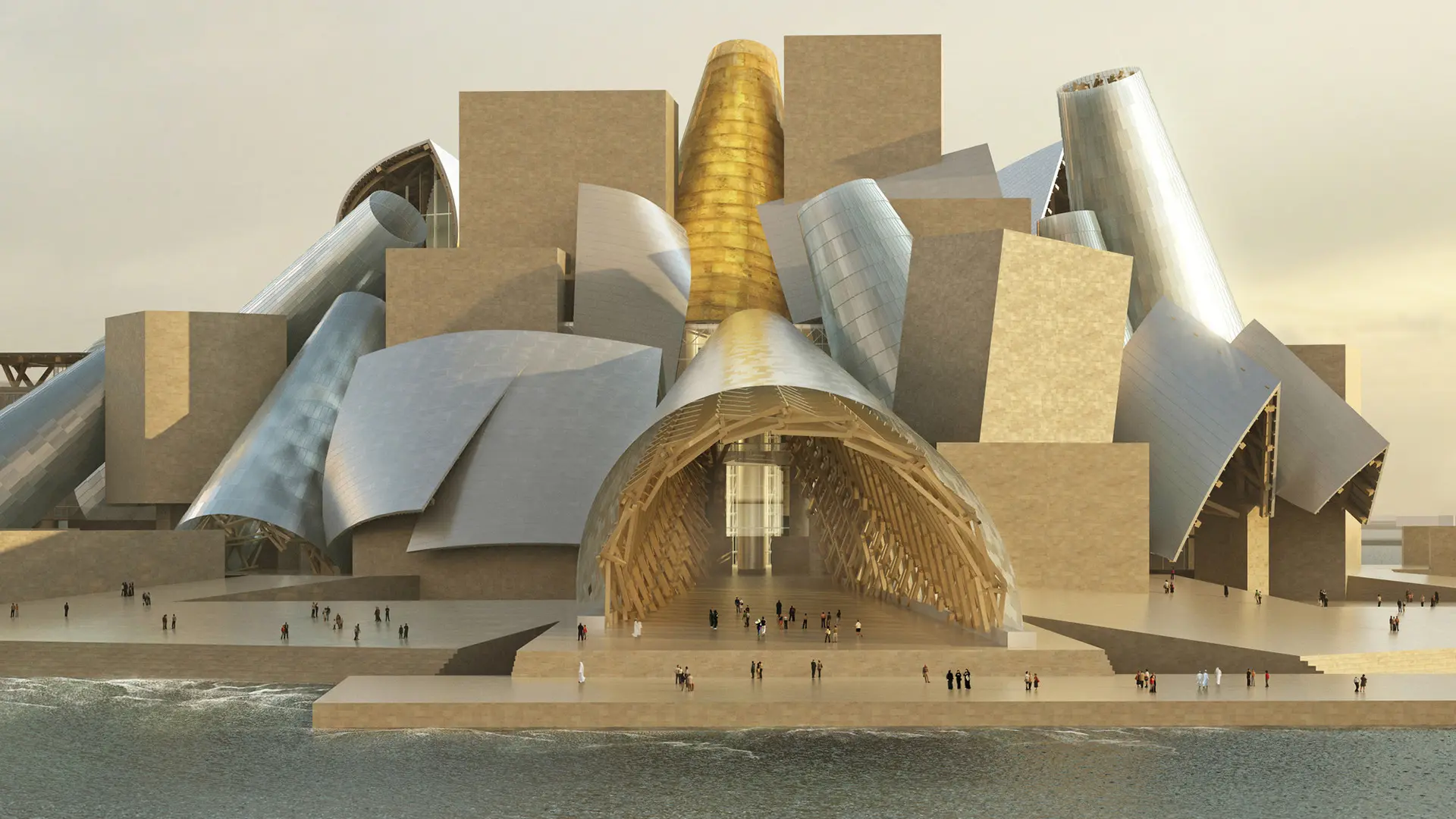From BIG to David Chipperfield, Frank Gehry to Snøhetta: a world tour of the best buildings set to open in 2026
The alternative spaces of Made in Italy design brands
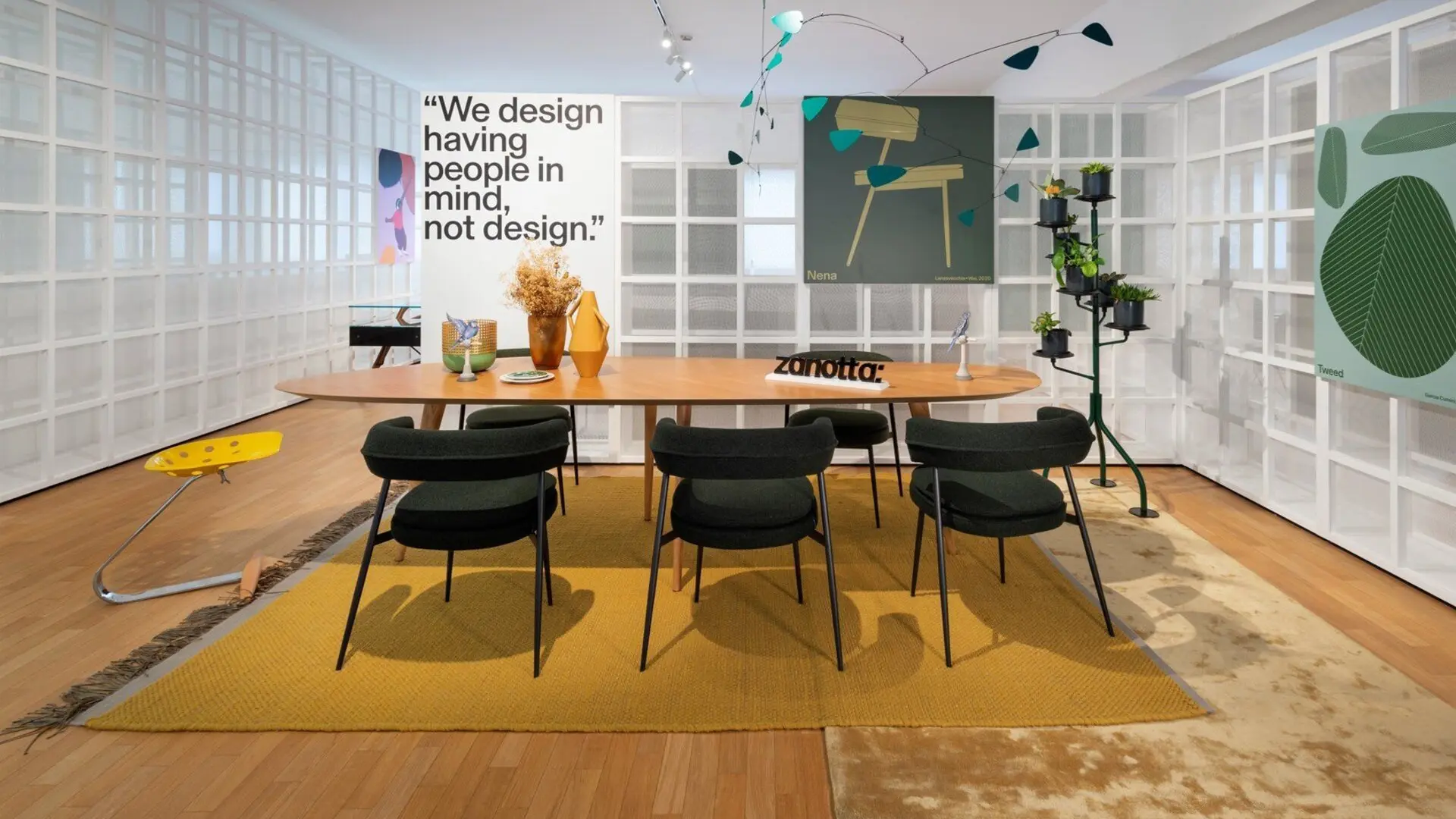
Zanotta Lab, ph. David Zanardi
Five different spaces, a flat, a workshop, a cultural hub, a materials collection and a showroom/museum have been adopted by Lago, Zanotta, LaPalma, De Castelli and Riva 1920. Alternative spaces in which clients can familiarise themselves with the brands
Once upon a time there was the showroom. A slightly static outlet bang in the city centre or in the cut and thrust of fashionable design, geared to presenting the latest, classic and evergreen collections to best advantage and in all their splendour. Today, however, in the age of the metaverse and the fluid dimension, transdisciplinarity and networking, many companies are looking for that extra something, beyond the confines of the usual four walls. This has led to experiments by a number of design companies, leveraging houses and flats (and even lighthouses), spaces where things can happen, workshops and concept fab labs, allowing their clients a different vision not just of the companies themselves but also of the design world as a whole.

Casa Lago, photo courtesy LAGO
Casa Lago
Lago is one such trailblazer. In 2009, much to everyone’s amazement, they launched their flat of the same name, completely furnished and not just accessible to employees but to everyone in the city. Within a very short time, hundreds of people found themselves welcomed into a new sort of environment, halfway between a shop and an actual home, finding themselves sitting on a sofa or sitting around a kitchen table. It is a multipurpose 400m2 space with conference rooms, temporary and co-working offices, that can also be rented as an events location or for business meetings.
“Design is far more than just an object,” Daniele Lago, CEO and Head of Design at LAGO said at the project launch. “When it’s done well, design also takes account of the context and enlivens places that can have a positive impact on the world, generating meanings and creating new relational opportunities, a huge asset for every one of us.”
The same trademark and vision – over and above temporary locations such as the Faro di Milano restaurant, an open space with a 360° view over the city, used for an edition of the Salone del Mobile – applies to Casa Lago, launched in 2016. It has become the synthesis of an experiment, geared to forging relationships with everything outside the company itself, breaking down the traditional design and furniture production bounds. Thus, a multipurpose space, in which design creates a welcoming environment worthy of the name Casa [home], can be found at Number 6 Via San Tomaso, just a hop and a skip from the Duomo in Milan.

Zanotta Lab, ph. David Zanardi
Zanotta Lab
The company set up by Aurelio Zanotta in 1954 has launched its Lab of the same name, at its historic headquarters in the Nova Milanese district. The space lends itself to almost anything, from conferences to screenings, to installations and performances. Needless to say products can also be tried out there, fabrics chosen or projects discussed over a working lunch. With an installation designed by Calvi Brambilla, the lab is clearly intent on expressing the DNA of the brand in a dynamic setting. With an open-door policy, designers, dealers, schools and journalists give shape to a hub where skills, values, behaviours and strategies can be shared, on a “campus” that is also home to the production departments, the administrative offices and the showrooms in a historic location designed in 1988 by De Pas, D’Urbino and Lomazzi. “The idea is to put people, with their own passions and their own personal individuality back at the centre” explains Giuliano Mosconi, President and CEO of Zanotta Spa. “Going forward, the aim is to foster a dialogue that will instil a sense of community, the relationship between product and consumer will become increasingly intimate. A sort of ‘aggregator’ that opens the company up to the outside world and is a mouthpiece for the quality of its products, triggering the rediscovery of empathetic design and authentic savoir faire.”

Riviera, photo courtesy LaPalma
Spazio Riviera – LaPalma
‘Dove le cose accadono’ [where things happen], claims the sign above the entrance to Riviera. the cultural hub set up by the LaPalma company and creative consultants Simple Flair. The hub, right in the centre of Milan, caters to a number of different scenarios - from light office to lounge & home, to café and outdoors - and the furniture is there to be used by the people and the meetings that light up the space. The brand, which has been producing home and contract furnishings for forty years, and has won a panoply of awards at both national and international level, decided to open a space with a difference, rather than a showroom, in the 5Vie area. The light-filled, large ground floor is where things happen, with a packed programme of events and exhibitions, talks, laboratories and workshops. “It’s not a showroom, but a living, real, contemporary and digital-oriented space, where the lines between online and offline are blurred. A space for projects, activities and a point of reference for the city’s creative scene, hosting different stories, different functions and different people. A meeting point, a place for exchange and creativity and, last but not least, human beings - in the firm belief that, now more than ever, design must be fuelled by research and cross-contamination in different fields,” said LaPalma.

De Castelli, ph. Cino Zucchi
De Castelli’s Materioteca
The Veneto-based De Castelli company is also experimenting with new locations with its Materials Collection in Via Visconti di Modrone, in the old part of Milan. It’s part showroom, part shop and part workshop. Designed by Cino Zucchi Architetti, the space showcases the three pillars of the brand - collection, surfaces, architectural – illustrating the company’s powers of expression and metal processing skills, a mix of high craftsmanship and technological know-how.
Designed to be a meeting point, for relational and project development, there is a heavy main door –original to the 17th century building – kept open by oversized brass wings; in the hallway, the glass and brass entrance invites visitors into a series of spaces in which both fixed and movable furnishings, all made of metals of varying compositions, demonstrate De Castelli’s technical and finishing skills. “The interior hasn’t simply been designed to act as a backdrop for the samples and activities, it also serves as a real interactive showcase for the potential of collaboration between designers and the company: a think-tank in which a blend of imaginative design, skilled craftsmanship and ongoing technological research generates new original creations,” says the brand. It’s not just a physical experience: the materials collection can also be visited virtually.


 Stories
Stories
